Idea by
David Habets
Call for ideas 2019
Brave New Substrate
Brave New Substrate

- New alliances
Brave New Substrate – is a research-by-design project investigating the biochemical future of the functioning industrial area ‘De Maurits’ in the South of the Netherlands. Over the course of history, the coal mine has transformed into a petrochemical complex that is now on the eve of the ‘biotech revolution’. In what ways can architecture contribute to the development of radical new industries at the beginning of our ‘biochemical’ anthropocene?
Exploring three landscape-experiments; a sulphate warehouse, abandoned mine shafts and the functioning cooling tower as substrates to new biochemical experiments. Hot water from the cooling tower, polluted water from the mine shafts and plastic mountains in the sulphate warehouse will form a new habitat for the isolated microbal life. Industrial heritage and knowledge development will be made perceivable in a radical new way, by fostering curiosity among the ‘laypersons’ and ‘the experts’ and a debate about industry in the 21st century.
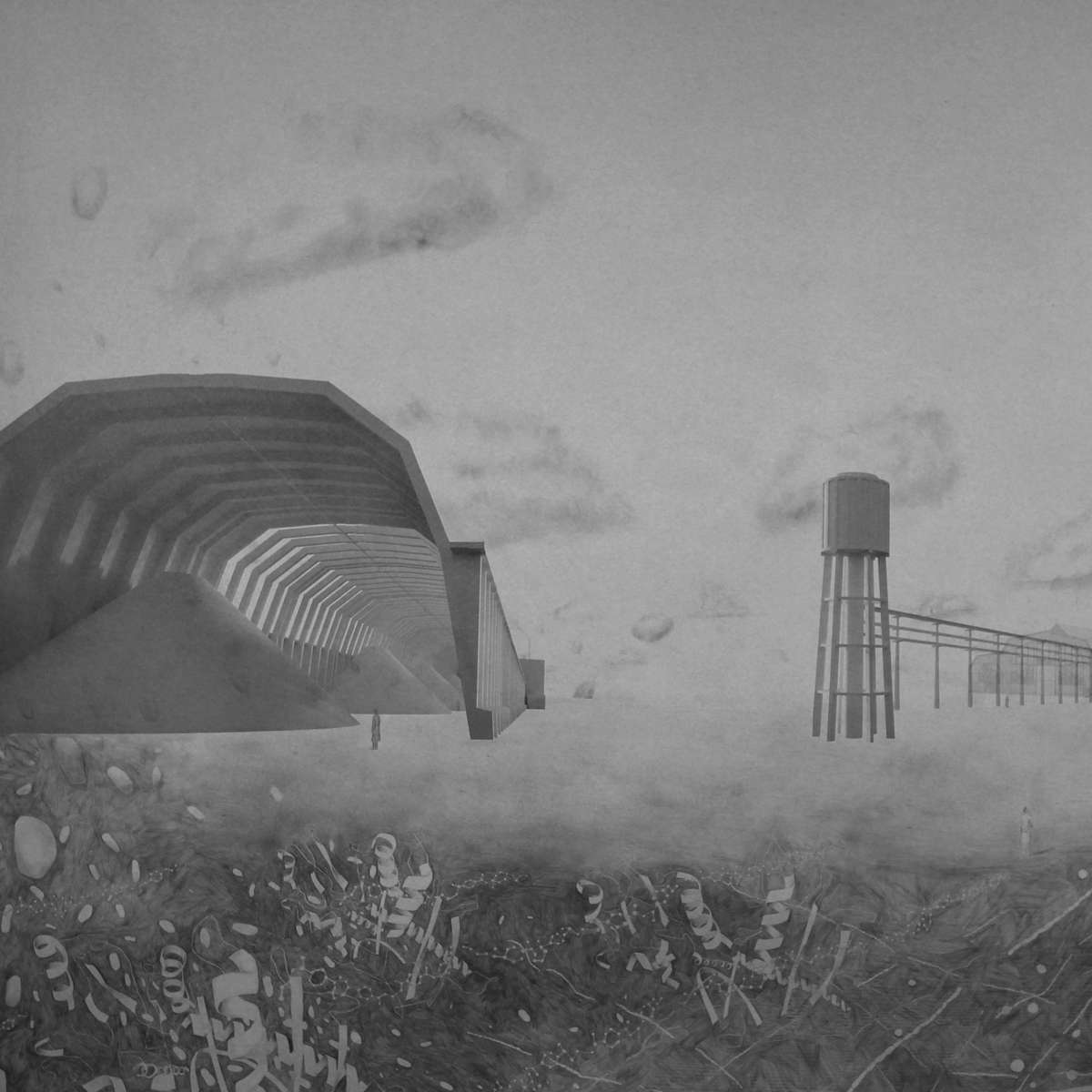
The six metre long hand-drawing will be exhibited during a symposium on the ‘aesthetics of industry in the 21st century’ in 2019. The drawing is a combination drawing on halftone paper, bringing together scientific drawing techniques of the 19th century with contemporary architectural renderings.
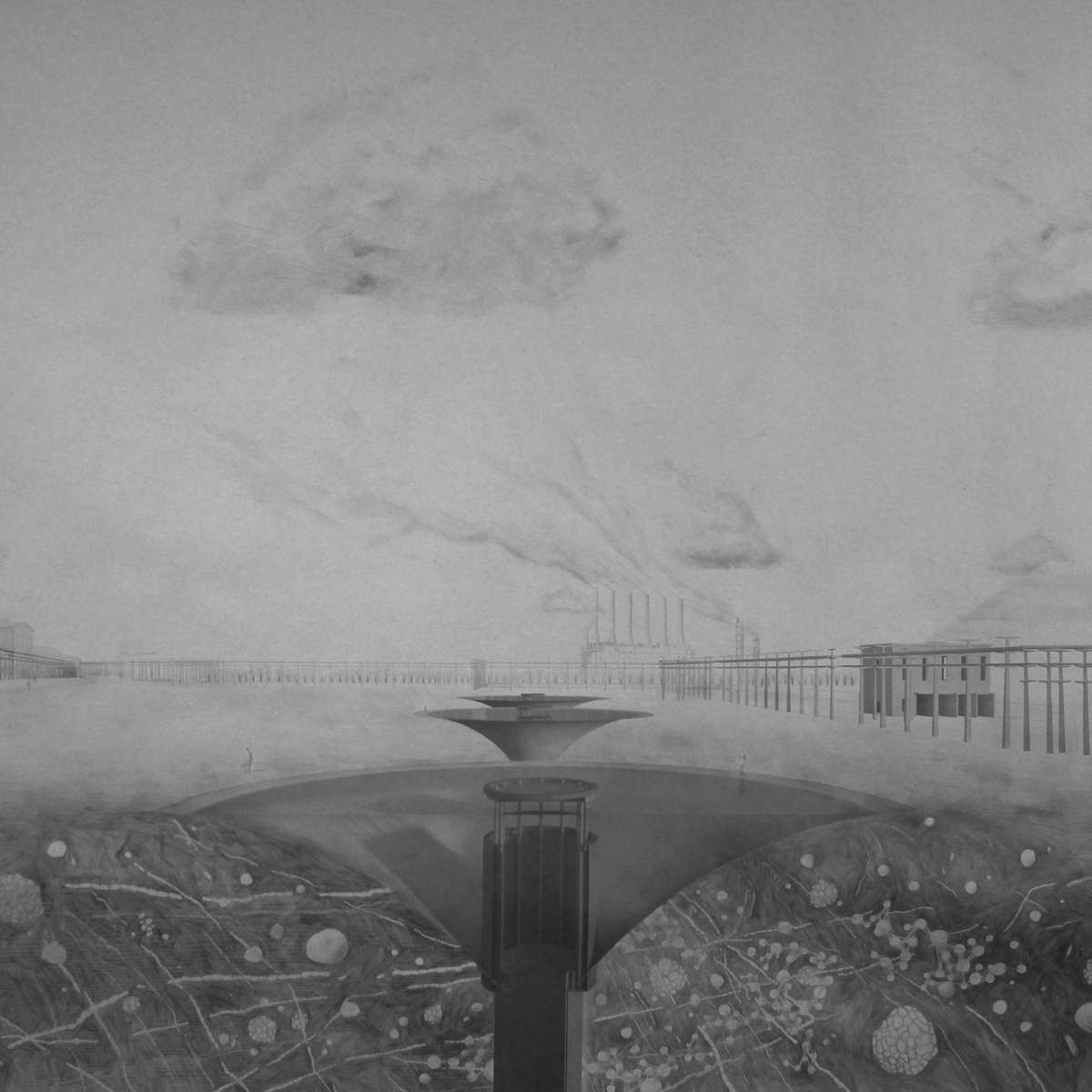
Hyperbolic ponds as a Winogradsky column around the three mine shafts of the Maurits Mine.
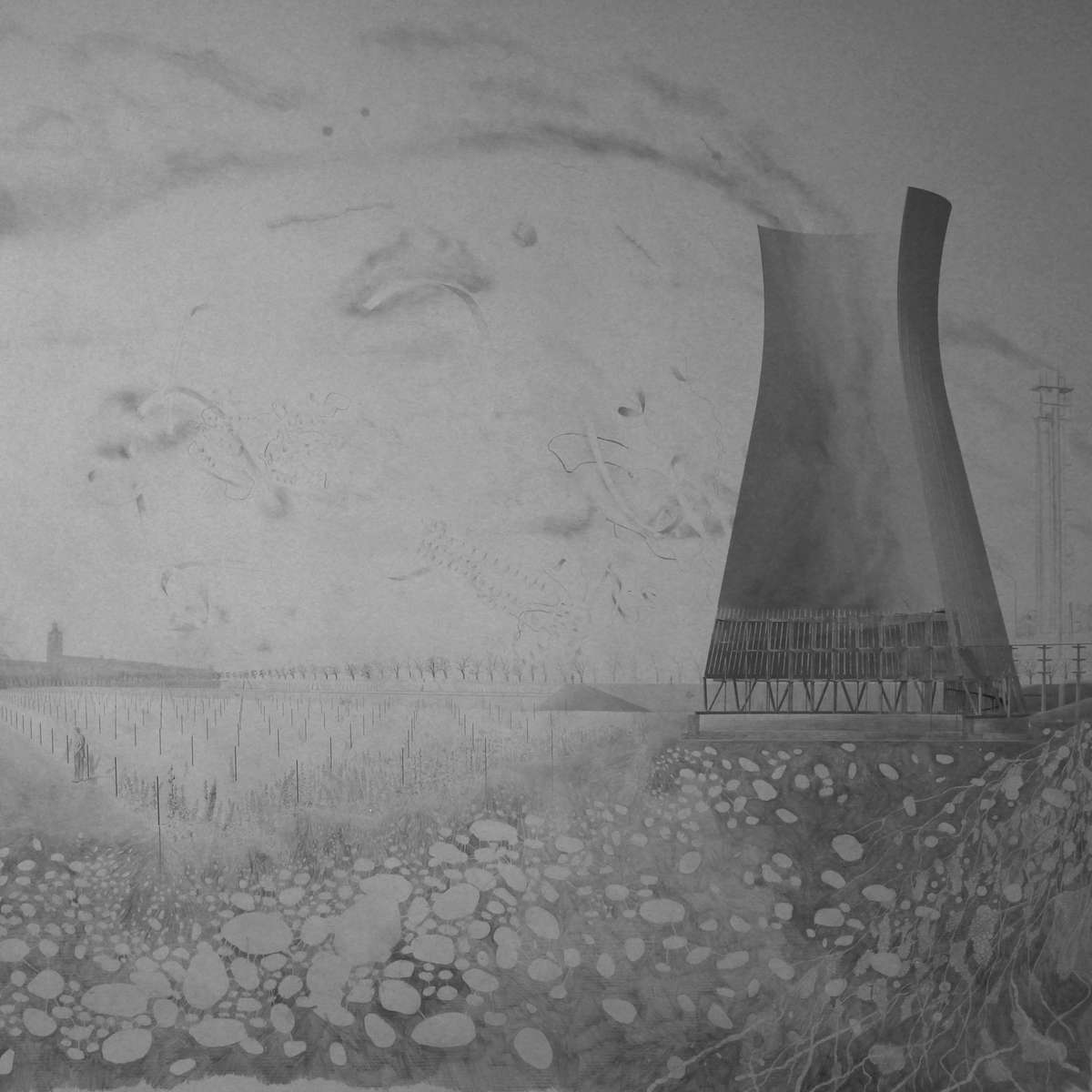
Waterfall under the cooling towers, with new physcomitrella patens moss wall.
Brave New Substrate
Brave New Substrate

- New alliances
Brave New Substrate – is a research-by-design project investigating the biochemical future of the functioning industrial area ‘De Maurits’ in the South of the Netherlands. Over the course of history, the coal mine has transformed into a petrochemical complex that is now on the eve of the ‘biotech revolution’. In what ways can architecture contribute to the development of radical new industries at the beginning of our ‘biochemical’ anthropocene?
Exploring three landscape-experiments; a sulphate warehouse, abandoned mine shafts and the functioning cooling tower as substrates to new biochemical experiments. Hot water from the cooling tower, polluted water from the mine shafts and plastic mountains in the sulphate warehouse will form a new habitat for the isolated microbal life. Industrial heritage and knowledge development will be made perceivable in a radical new way, by fostering curiosity among the ‘laypersons’ and ‘the experts’ and a debate about industry in the 21st century.
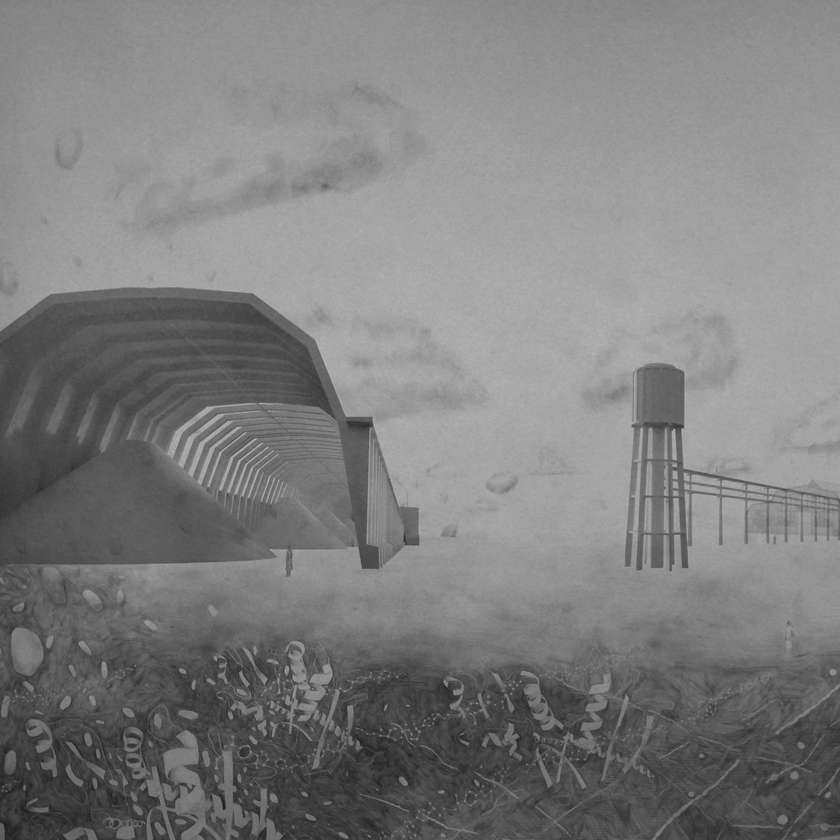
The six metre long hand-drawing will be exhibited during a symposium on the ‘aesthetics of industry in the 21st century’ in 2019. The drawing is a combination drawing on halftone paper, bringing together scientific drawing techniques of the 19th century with contemporary architectural renderings.
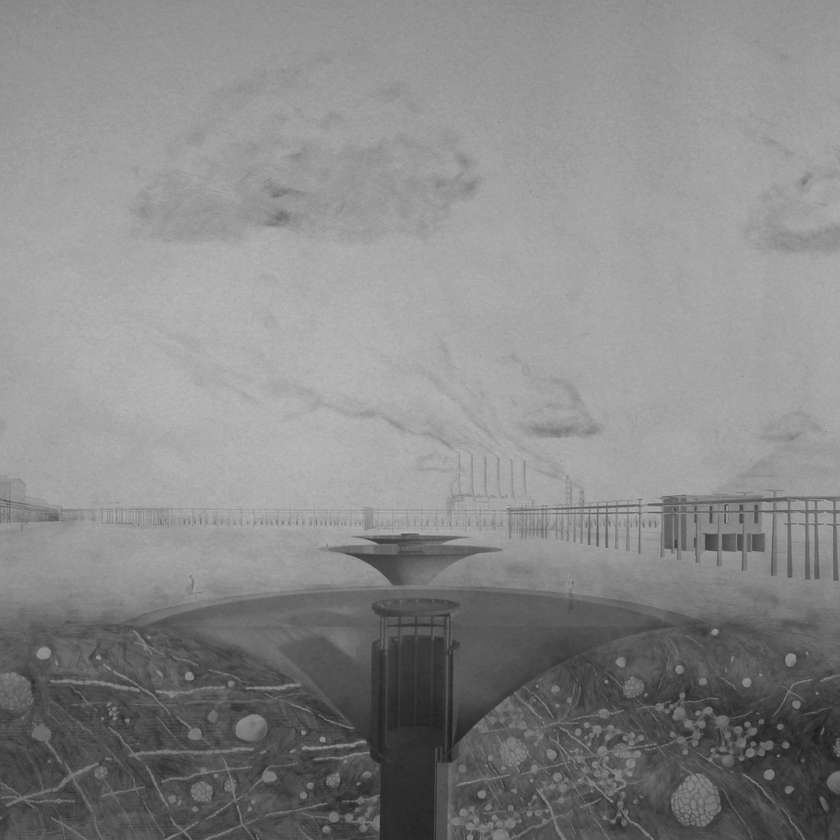
Hyperbolic ponds as a Winogradsky column around the three mine shafts of the Maurits Mine.

Waterfall under the cooling towers, with new physcomitrella patens moss wall.